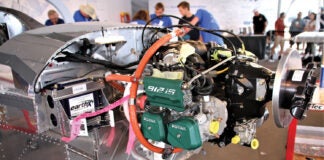Jim Weir
Aero ‘lectrics
Jim Weir offers a solution for how to regain reception when your rubber ducky antenna fails.
Aero ‘lectrics
Proper sizing and selection of the wire that goes into an aircraft can have a profound effect on the efficacy of the installation.
Aero ‘lectrics
Transistors don't like excessive heat, but there's a way to beat it: an engineered heat sink.
Aero ‘lectrics
Jim Weir describes some close encounters with power regulators of the plastic and metal-can kind.
Aero ‘lectrics
Jim Weir presses the venerable LM317 variable voltage regulator (plus a few other parts) into service as a way to juice up a discharged battery.
Aero ‘lectrics
How do you condition a battery not in regular use to extend its lifetime? Run it down and then charge it back up. Jim Weir explains how to achieve this with about $10 worth of parts.
Aero ‘lectrics
Jim Weir describes how he built the airframe structure of his new-and-improved wind tee.
AeroLectrics
Why we need regulated voltage in our aircraft and how zener diodes, resistors, transistors and semiconductors help us get there.














